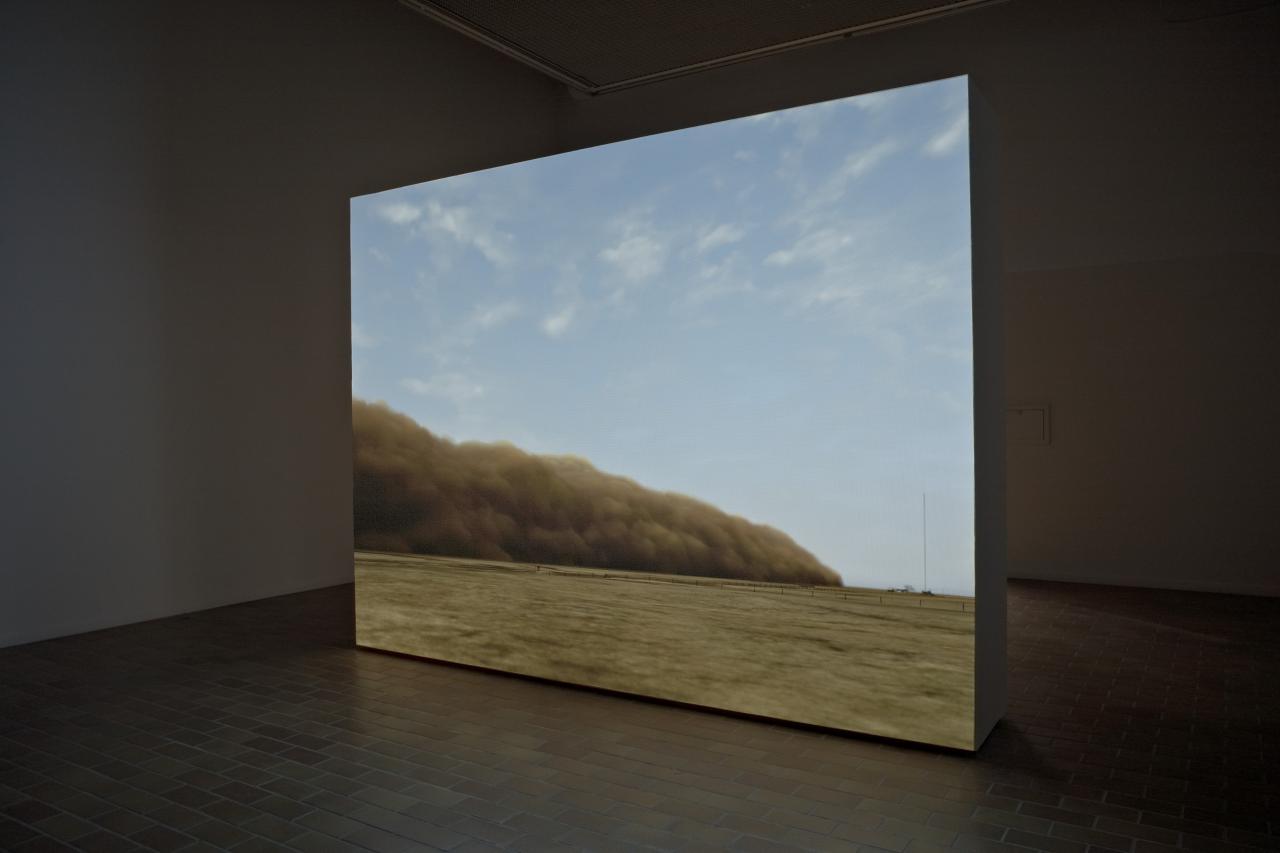
Exhibition
9 Oct 2009 - 12 Dec 2009
Illingworth Kerr GalleryJohn Gerrard
Grow Finish Unit (Near Elkhart, Kansas), 2008
Dust Storm (Dalhart, Texas), 2007
The two Grow Finish Unit works (Eva, Oklahoma and near Elkhart, Kansas) stand as unique records of the extremes of functionality to be found at the start of the industrialised food production chain, wherein the contract between farmer and farmed is reduced to a purely technical, almost contactless process. The sheds reconstructed on these two virtual representations of sites on the Great Plains of the western United States each house up to 1,000 pigs, and each is entirely unmanned and operated on a day to day basis by computer.
A scene almost entirely without visible action, the only apparent movement is that of an autonomous wind which animates the surface dust on the effluent ponds in an ongoing and open way. Additionally, in a symbolic moment of exchange, every 6 - 8 months a transport truck will arrive and pull up to each building, where it stands for 1 hour. This rhythm, which is an open behavior, reflects the growth cycle of the pigs enclosed within the sheds: the animals are being loaded into the trucks to be transported for butchering. As in reality, at no point are the many thousands of occupants of the eight sheds visible under the sun, which relentlessly circles in a 12-month orbit of its own, giving ultimate definition to the span of the work.
As in the artist’s related works with oil derricks, in viewing the Grow Finish Units one is being exposed to a representation of modern society’s means of production at the structural level. The aesthetic is one that has been shaped directly and purely by speculative forces. The sense that this representation is not an image but rather a place that exists in simulation, always and in real time, provides a special position from which to contemplate the reality that undergirds 'everyday' reality.
- Statement courtesy of the 53rd International Art Exhibition, La Biennale di Venezia, Italy, 2009.
The two Dust Storm works (Dalhart, Texas and Manter, Kansas) both derive from a single archival photograph, dating from the 1930s and depicting one of the legendary dust storms that ravaged the American middle West during that time.
The Dust Bowl, as the region was thereby deemed, has been identified historically as a central player in the economic slump of that time – the Great Depression.
In the works, a dust storm permanently looms on the contemporary landscape. Unfolding according to an autonomous and unscripted pattern, it is conceived by the artist as a sculptural form.
Each Dust Storm required the recreation within the virtual of up to ten square miles (16km) of real landscape, including all the windmills, farms and fences found therein. Built from an archive of thousands of on site photographs, together with publicly available satellite data, the works each required over six months to produce, time which was devoted to being as accurate and rich with detail as the technology implemented would allow.
- Statement courtesy of the Marian Goodman Gallery, New York, 2007.
Born in Dublin in 1974, John Gerrard received a BFA from The Ruskin School of Drawing and Fine Art, Oxford University. During this time he made his first experiments with 3D scanning as a form of sculptural photography. He undertook postgraduate studies at The School of The Art Institute of Chicago and Trinity College, Dublin, and in 2002 was awarded a Pépinières Residency at Ars Electronica, Linz, where he developed his first works in Realtime 3D.